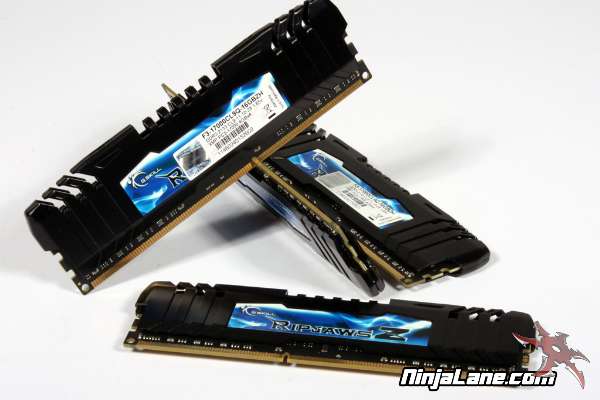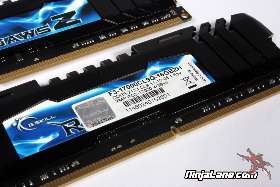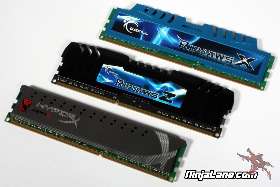GSkill RipjawsZ PC3 17000 CL9 Quad Channel Memory Kit
Author: Dennis Garcia
Published: Tuesday, March 20, 2012
Introduction
When building a high-performance system you need to ensure that you are using the right components for your application. In the case of gaming and overclocking your choice of memory module can often be crucial in leveling out low framerates and getting the best performance possible especially when paired with the latest Sandy Bridge processor from Intel.
In this review we will be looking at a special quad channel memory kit from GSkill called the RipjawsZ F3-17000CL9Q-16GBZH. These modules are specifically designed for the quad memory channels found in the LGA2011 Sandy Bridge E processors and X79 platforms. We have come to consider GSKIll to be one of the top memory suppliers to the enthusiast market given their preference to offering a variety of high performance memory options that differ only in speed and latency.
In this review we will be looking at a special quad channel memory kit from GSkill called the RipjawsZ F3-17000CL9Q-16GBZH. These modules are specifically designed for the quad memory channels found in the LGA2011 Sandy Bridge E processors and X79 platforms. We have come to consider GSKIll to be one of the top memory suppliers to the enthusiast market given their preference to offering a variety of high performance memory options that differ only in speed and latency.

RipjawsZ is a third generation memory module designed for the Intel platform. The previous generation RipjawsX was a LGA1155 specific module tuned to run fast on the new Sandy Bridge IMC. RipjawsZ aims to continue that trend by providing the same level of performance to the Sandy Bridge E with twice as many modules.
Sandy Specific Memory
The Sandy Bridge architecture puts a huge emphasis on memory performance that favors speed over latency. This is evident in the memory multiplier that is an integral part of the system and requires some special attention when overclocking. There are a number of memory multipliers available with Sandy Bridge E that range from the default 16x up to 36x on some systems. These are multiplied by the Base clock (BCLK) and CPU Strap (1x 1.25x, 1.66x and 2.5x) to determine the overall memory frequency.
By default our 3960X boots at 16 x 1 x 100 giving us a memory frequency of 1600Mhz. If you are fortunate enough to buy higher speed memory you have two options to increase performance.
Our GSKill RipjawsZ modules are 2133Mhz parts and come with a couple of fully supported XMP profiles that, when set, will adjust the system clock to a 21.33x along with setting the base timings and voltage. The default configuration has the modules running at CL11-11-13-28 with a respectable voltage of 1.5v. Once you engage the XMP profile the voltage jumps to 1.65v and timings change to a slightly better profile of CL9-11-12-28.
By default our 3960X boots at 16 x 1 x 100 giving us a memory frequency of 1600Mhz. If you are fortunate enough to buy higher speed memory you have two options to increase performance.
- Set the XMP Profile which will auto adjust for timing, frequency and voltage.
- Manually adjust the settings to match or tweak as you would like.
Our GSKill RipjawsZ modules are 2133Mhz parts and come with a couple of fully supported XMP profiles that, when set, will adjust the system clock to a 21.33x along with setting the base timings and voltage. The default configuration has the modules running at CL11-11-13-28 with a respectable voltage of 1.5v. Once you engage the XMP profile the voltage jumps to 1.65v and timings change to a slightly better profile of CL9-11-12-28.
RipjawsZ modules feature a very unique heatspreader design that feels considerably stronger than the panel type heatspreaders common to the RipjawsX line. This is due in part to the encased design that shields the entire module and adds a little weight in the process. In terms of height both Ripjaws modules are the same making them slightly taller than the third module in the photo.
Be sure to check your heatsink for proper clearances since these will cause you a little grief.
Be sure to check your heatsink for proper clearances since these will cause you a little grief.



